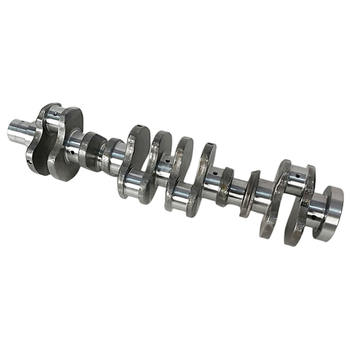The Evolution of Crankshaft Manufacturing
It's no secret that material science has been a game-changer in various industries. But have you ever stopped to consider its impact on crankshaft manufacturing? To be honest, it's a pretty fascinating topic.
From Traditional Materials to High-Tech Alloys
Crankshafts, as it turns out, are essential components in engines. They convert the linear motion of pistons into rotational motion, making them indispensable in automobiles, ships, and aircraft. Over the years, material science has significantly influenced the materials used in their production.
The Rise of Advanced Materials and Processes
Traditional crankshafts were typically made from cast iron or steel. However, modern crankshafts often utilize high-tech alloys that offer superior strength, durability, and weight reduction.
The Role of Lightweight Materials
One of the significant trends in crankshaft manufacturing is the shift towards lightweight materials. These materials reduce engine weight, improve fuel efficiency, and decrease emissions. Aluminum alloys, for instance, are becoming increasingly popular due to their lightweight and high strength-to-weight ratio.
The Impact of High-Strength Steels
On the other hand, high-strength steels are also gaining traction. They provide excellent fatigue resistance and durability, which are crucial for high-performance engines. Interestingly enough, these steels can withstand extreme conditions without compromising on weight.
Practical Applications and Future Prospects
So, what does this mean for the future of crankshaft manufacturing? Here are a few possibilities:
A Call to Action
As material science continues to evolve, so too will crankshaft manufacturing. Stay informed about these advancements and consider how they might apply to your business or projects. After all, knowledge is power, and understanding the latest developments in this field could give you a competitive edge.
Embrace the Future
So, are you ready to embrace the future of crankshaft manufacturing? Whether you're an engineer, a manufacturer, or simply someone interested in the world of engines, it's clear that material science is playing a pivotal role in shaping this industry. Keep learning, stay curious, and prepare to be amazed by what's next!




